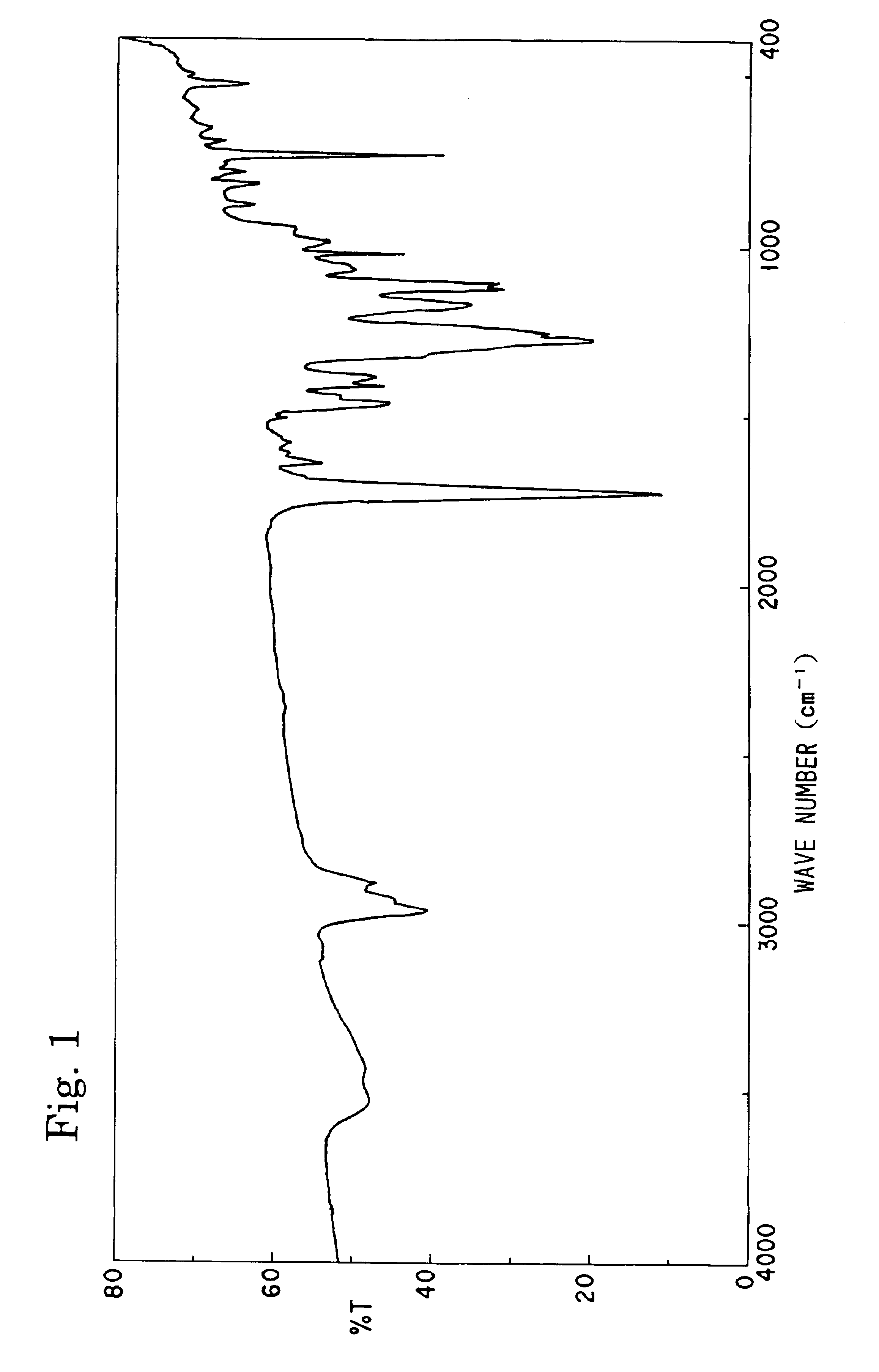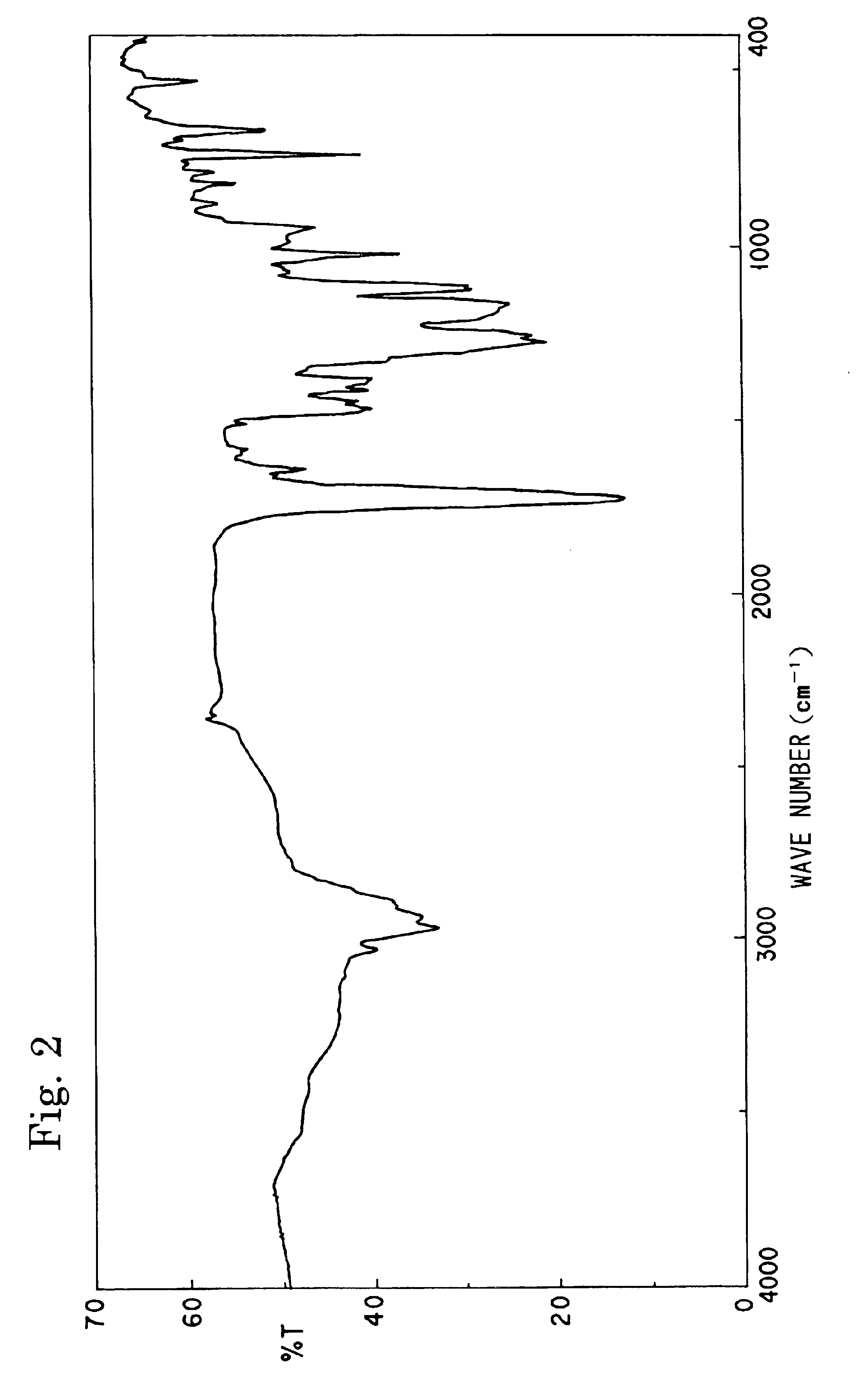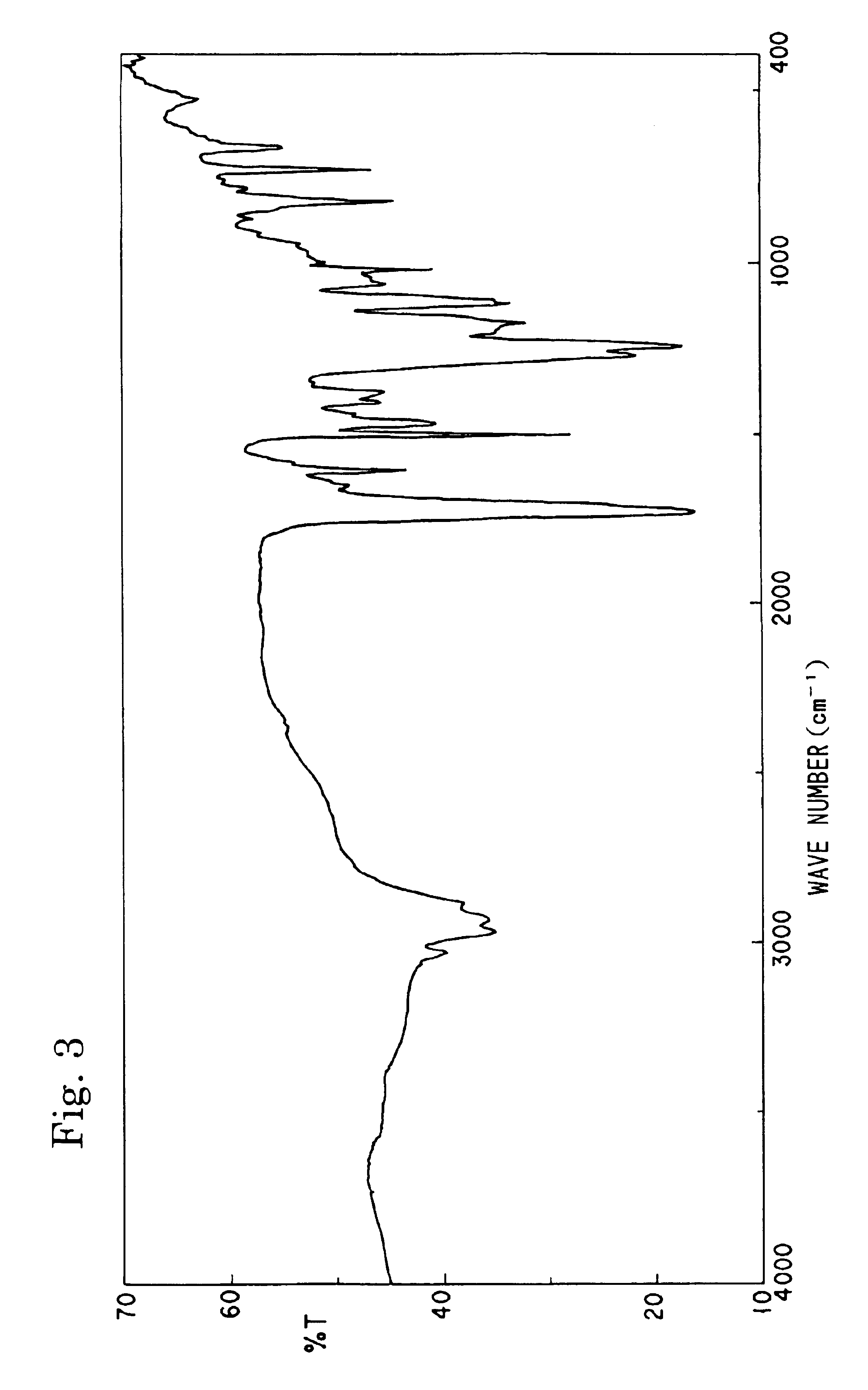Unsaturated polyester compounds, resins curable with actinic energy ray, processes for the production thereof, and curable compositions
a technology of actinic energy ray and resin, which is applied in the field of unsaturated polyester compounds, resins curable with actinic energy ray, processes for the production of such compounds, and curable compositions, can solve the problems of not being subjected to a further modification reaction, its use, and compositions containing this compound are inferior in adhesiveness, etc., to achieve good mechanical properties, low shrinkage on curing, and high flexibility and strength. good
- Summary
- Abstract
- Description
- Claims
- Application Information
AI Technical Summary
Benefits of technology
Problems solved by technology
Method used
Image
Examples
synthesis example 1
[0108]Into a 100 ml four-necked flask equipped with a stirrer, a thermometer, and a reflux condenser, 18.1 g of terephthalate bisoxetane (manufactured by Ube Kosan K.K.), 2.5 g of isophthalic acid, 4.3 g of methacrylic acid, 1.0 g of tetraphenylphosphonium bromide, 0.05 g of methoquinone, and 20 g of propylene glycol monomethyl ether acetate were charged and stirred at 140° C. for 12 hours to obtain a resinous solution containing 55% of an unsaturated polyester compound. The completion of the reaction was judged by confirming the consumption of all monomer components by the GPC (gel permeation chromatography). The structure of the resultant compound was confirmed by the IR spectrum and 1H-NMR. The weight-average molecular weight of the compound determined by the GPC was 2,500. Hereinafter, this resin will be referred to as “Resin-A”. The IR spectrum of the resin obtained is shown in the FIG. 1.
synthesis example 2
[0109]The synthesis was carried out by following the procedure of Synthesis Example 1, except that the amount of isophthalic acid charged was changed to 7.1 g and the amount of methacrylic acid charged was changed to 1.5 g, to obtain a resinous solution containing 55% of an unsaturated polyester compound having the weight-average molecular weight of 4,200. The structure of the resultant compound was confirmed by the IR spectrum and 1H-NMR. The weight-average molecular weight of the compound determined by the GPC was 4,200. Hereinafter, this resin will be referred to as “Resin-B”.
synthesis example 3
[0110]Into a 100 ml four-necked flask equipped with a stirrer, a thermometer, and a reflux condenser, 10.7 g of bis(3-ethyl-3-oxetanyl)ether (manufactured by Ube Kosan K.K.), 5.5 g of adipic acid, 1.0 g of tetraphenylphosphonium bromide, and 20 g of N-methylpyrrolidone were charged and stirred at 140° C. for 12 hours to effect polyaddition reaction. 2.2 g of methacrylic acid and 0.1 g of methoquinone were added to the reaction solution and they were further stirred at 140° C. for 12 hours. The resultant reaction mixture was poured into a large amount of water and the precipitate was dried at reduced pressure to obtain 8.5 g of an unsaturated polyester compound. The structure of the resultant compound was confirmed by the IR spectrum and 1H-NMR. The weight-average molecular weight of the compound determined by the GPC was 2,100. Hereinafter, this resin will be referred to as “Resin-C”.
PUM
| Property | Measurement | Unit |
|---|---|---|
| Percent by mass | aaaaa | aaaaa |
| Percent by mass | aaaaa | aaaaa |
| Percent by mass | aaaaa | aaaaa |
Abstract
Description
Claims
Application Information
 Login to View More
Login to View More - R&D
- Intellectual Property
- Life Sciences
- Materials
- Tech Scout
- Unparalleled Data Quality
- Higher Quality Content
- 60% Fewer Hallucinations
Browse by: Latest US Patents, China's latest patents, Technical Efficacy Thesaurus, Application Domain, Technology Topic, Popular Technical Reports.
© 2025 PatSnap. All rights reserved.Legal|Privacy policy|Modern Slavery Act Transparency Statement|Sitemap|About US| Contact US: help@patsnap.com



